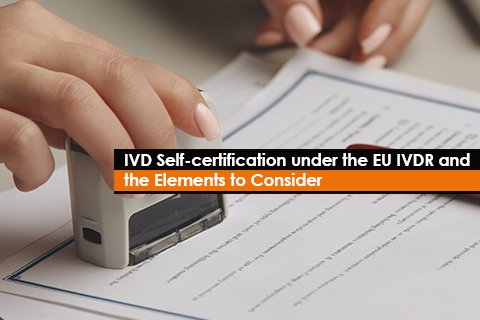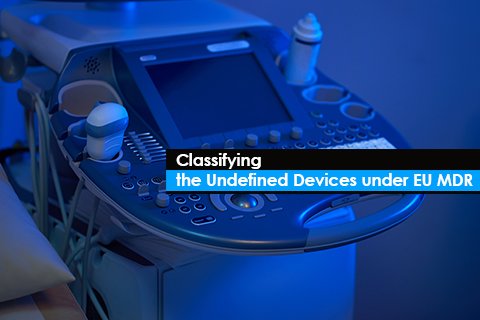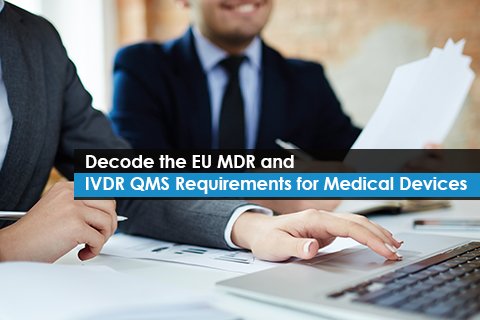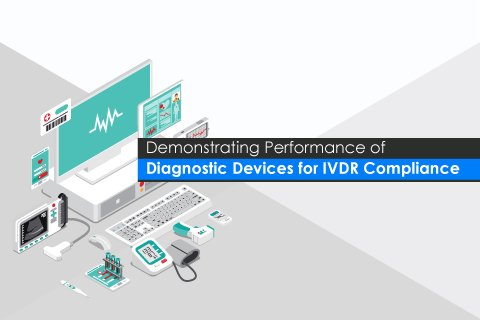US FDA Approval Pathways for IVDs

In-Vitro diagnostics (IVD) are products that are reagents, instruments, or systems that can detect diseases or other conditions and monitor a person’s overall health to help cure, treat, or prevent diseases.
The classification of an IVD determines the appropriate premarket process for approval. The FDA classifies IVD products into Class I, II, or III based on the associated risk.
|
Classification What, Why, and How of PMSR under EU MDR and EU IVDRBlog Image

The importance of post-market surveillance (PMS) has never been out of the buzz. Regulatory Authorities worldwide have established some stringent rules and regulations to efficiently monitor medical devices even after placing them on the market. Similarly, the European Union (EU) has emphasized PMS in its new regulations. Many requirements have been implied on the manufacturers, one of them being the Post-Market Surveillance Reports (PMSRs). Symbols as a Universal Language for Medical Device LabelingBlog Image

In a global marketplace with more than 7,100 spoken languages, manufacturers need to consider the local language and culture when developing medical device product labels. How does one make it possible to reach out to a diverse group of people? One of the time-tested ways is the use of medical device symbols. It can convey a significant amount of information in a small space. Although it is optional, using symbols on the labeling of medical devices is strongly advised. It offers benefits to both users and manufacturers, such as: IVD Self-certification under the EU IVDR and the Elements to ConsiderBlog Image

Class A IVDs under European Union In Vitro Diagnostic Devices Regulations (EU IVDR) 2017/745 require self-certification. The manufacturer is required to self-declare their product’s compliance with the EU IVDR’s requirements and affix the CE marking. While the process for self-declaration seems easy compared to other device routes, the intricates, when ignored, can create complications in placing the device in the EU market. Below are some of the key points that manufacturers need to note while placing Class A devices on the market: Classifying the Undefined Devices under EU MDRBlog Image

The medical devices and In Vitro Diagnostic devices (IVDs) under the European Union Medical Device Regulation (EU MDR) 2017/745 and In Vitro Diagnostic Devices Regulations (IVDR) 2017/746 are categorized into four (04) classes and twenty-two (22) rules (MDR)/ seven (07) rules (IVDR). Compared to the previous scope of the product in the Directives, the current regulation has expanded its scope. For instance, the EU MDR now covers contact lenses as well. Decode the EU MDR and IVDR QMS Requirements for Medical DevicesBlog Image

Implementing and maintaining a Quality Management System (QMS) is mandatory to launch medical devices in the global markets. Having an effective QMS should embody all the procedures and processes covering all aspects from design to production, packaging and distribution. It must become a continuous pursuit for every medical device organization to update their QMS, as per the directives set forth by the global Regulatory Agencies. An Exclusive Webinar: Demonstrating Performance of Diagnostic Devices for IVDR ComplianceBlog Image

It is a known fact that the European Union’s In Vitro Diagnostic Medical Devices Regulation (EU) 2017/746 (IVDR) will be in effect from May 26, 2022 and IVD manufacturers have to be prepared to implement the mandatory Regulatory requirements for this transition. This new regulation requires manufacturers to demonstrate appropriate levels of clinical evidence to gather the right clinical data based on the class of the IVD, intended purpose, the software involved and whether the software is independent or combined or an accessory? Pagination |